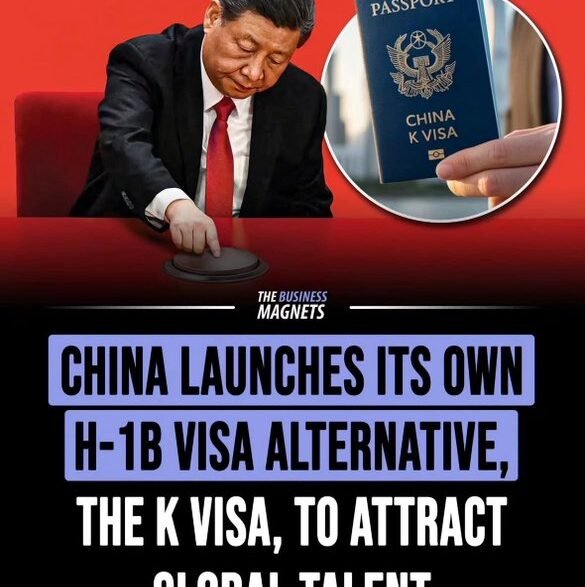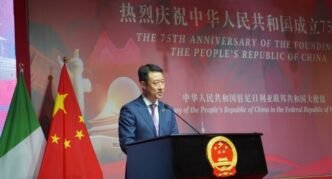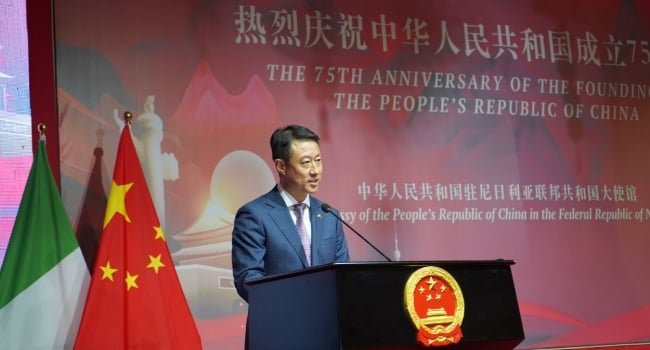Beijing, China — In a major policy shift set to reshape international mobility, China has announced the launch of a new visa category known as the K visa, effective October 1, 2025. The visa, designed specifically for young international professionals in science, technology, engineering, and mathematics (STEM) fields, marks Beijing’s most ambitious effort yet to attract global talent into its innovation-driven economy.
The move is part of China’s broader strategy to enhance its role as a hub for scientific research, technological development, and high-value industries at a time when global competition for skilled talent is intensifying.
What is the K Visa?
The K visa is a specialized entry permit created to facilitate the admission of foreign professionals under 40 who hold academic or professional backgrounds in STEM-related disciplines. Unlike existing work visas such as the Z visa, which are tied to specific employment contracts, the K visa aims to provide greater flexibility and faster access for highly skilled individuals to enter, live, and work in China.
According to official statements, applicants will be required to demonstrate qualifications in areas such as:
- Artificial Intelligence (AI)
- Biotechnology
- Advanced Engineering
- Renewable Energy
- Space and Aeronautical Research
- Information and Communication Technologies (ICT)
- Mathematics and Data Science
This list, however, is not exhaustive, as the Chinese government has signaled it will continue updating eligible fields in line with its evolving national development strategies.
Why Now? The Strategic Importance of the K Visa
China’s decision comes at a time when global demand for skilled professionals in STEM is outpacing supply. Countries such as the United States, Canada, Germany, and the United Kingdom have rolled out programs to attract international researchers, engineers, and scientists. By introducing the K visa, China is signaling that it intends to compete directly for global brainpower.
Officials in Beijing have described the initiative as a “win-win mechanism”—allowing China to bolster its innovation capacity while offering foreign professionals new opportunities in one of the world’s fastest-growing economies.
The launch of the visa also coincides with the Chinese government’s 14th Five-Year Plan (2021–2025), which emphasizes innovation-driven growth, self-reliance in technology, and leadership in industries of the future. With the K visa set to take effect on the very first day of China’s 15th Five-Year Plan era, it is widely seen as a cornerstone policy for the next decade of scientific and technological development.
Key Features of the K Visa
Though final regulations are expected to be published in the coming weeks, preliminary details indicate several groundbreaking features:
- Fast-Track Application Process
- K visa applications will reportedly have a shorter processing period, possibly under 30 days, compared to other work visas.
- Extended Duration
- Unlike many short-term visas, the K visa may offer initial stays of up to five years, with the possibility of renewal.
- Multiple Entry Privileges
- Holders will likely enjoy multiple entry rights, allowing them to travel in and out of China without restrictions during the visa’s validity.
- Work and Research Freedom
- While existing work visas typically tie foreign employees to a single employer, the K visa may allow more flexibility in switching jobs, participating in projects, or collaborating across institutions.
- Pathway to Permanent Residency
- Analysts believe the K visa could become a steppingstone toward Chinese permanent residency for foreign STEM talent, a policy area where China has historically been cautious.
Global Reactions and Expectations
The announcement has already attracted attention in academic, diplomatic, and business circles. Universities, multinational corporations, and research institutions are expected to welcome the new policy as it opens new channels for collaboration.
Dr. Lin Wei, a Beijing-based policy analyst, described the K visa as “China’s most open gesture yet to global talent”, adding that it could “reshape the international mobility of scientists and engineers in the next decade.”
Foreign chambers of commerce in China have also expressed optimism. The European Union Chamber of Commerce in China noted that easier entry for young professionals could enhance joint research projects and industrial cooperation.
Meanwhile, in African, Latin American, and Southeast Asian countries, where many students already pursue STEM degrees in China, the K visa is being hailed as a natural bridge for graduates to transition into the Chinese workforce.
Opportunities for Young Professionals
For young STEM professionals, the K visa could be a career-defining opportunity. China currently ranks as one of the largest investors in advanced research, with significant spending in artificial intelligence, 5G technology, semiconductors, and renewable energy.
Foreign professionals entering under the K visa would gain access to:
- World-class laboratories in Beijing, Shanghai, Shenzhen, and other innovation hubs.
- Collaborative projects with leading Chinese universities and tech companies.
- Government-funded research programs targeting global challenges such as climate change, healthcare innovation, and food security.
- Industry exposure in one of the world’s most competitive tech ecosystems.
Additionally, the K visa could help foster cultural and professional exchange, deepening understanding between China and the global scientific community.
Challenges and Considerations
Despite its potential, the K visa also raises several questions:
- Implementation Clarity
- Analysts are awaiting detailed guidelines on eligibility, recognition of foreign qualifications, and employment rights.
- Integration Barriers
- While China offers vast opportunities, challenges such as language barriers, cultural adaptation, and regulatory complexities remain for foreign professionals.
- Global Competition
- China is not alone in this race. Competing visa programs, such as the U.S. H-1B, Canada’s Global Talent Stream, and Germany’s Blue Card, already attract top-tier talent. The success of the K visa will depend on how competitive and user-friendly the program becomes in practice.
- Geopolitical Tensions
- The visa program will unfold in an era of shifting geopolitical alliances and rivalries, particularly in technology sectors. Some experts caution that political dynamics could affect the perception of China as a destination for foreign talent.
China’s Growing Magnetism for STEM Talent
The K visa builds on existing trends. Over the past decade, China has become an increasingly attractive destination for foreign students and professionals. Data from the Ministry of Education shows that hundreds of thousands of international students—particularly from Asia, Africa, and Europe—already study in Chinese universities, many in STEM fields.
The new visa effectively creates a continuum of opportunity: from education in China to professional practice, thereby ensuring that skilled graduates can seamlessly transition into the workforce without bureaucratic hurdles.
Looking Ahead
As the October 1, 2025 launch date approaches, attention will turn to how the K visa is implemented and whether it delivers on its promise. For China, the stakes are high. If successful, the K visa could:
- Strengthen China’s global reputation as a magnet for talent.
- Accelerate innovation in strategic industries.
- Build enduring professional and cultural linkages with the next generation of global scientists and engineers.
For young professionals worldwide, the K visa represents not just a travel document but a gateway to one of the most dynamic innovation landscapes of the 21st century.
Conclusion
The launch of the K visa on October 1, 2025, marks a historic milestone in China’s immigration and talent-attraction policies. By targeting young STEM professionals, Beijing is sending a clear message: it wants to be at the center of the global talent map.
While challenges remain, the potential benefits for individuals, industries, and nations are immense. As the world continues to grapple with rapid technological change, the K visa may become one of the defining tools shaping where the brightest minds choose to live, work, and innovate in the decades ahead.














